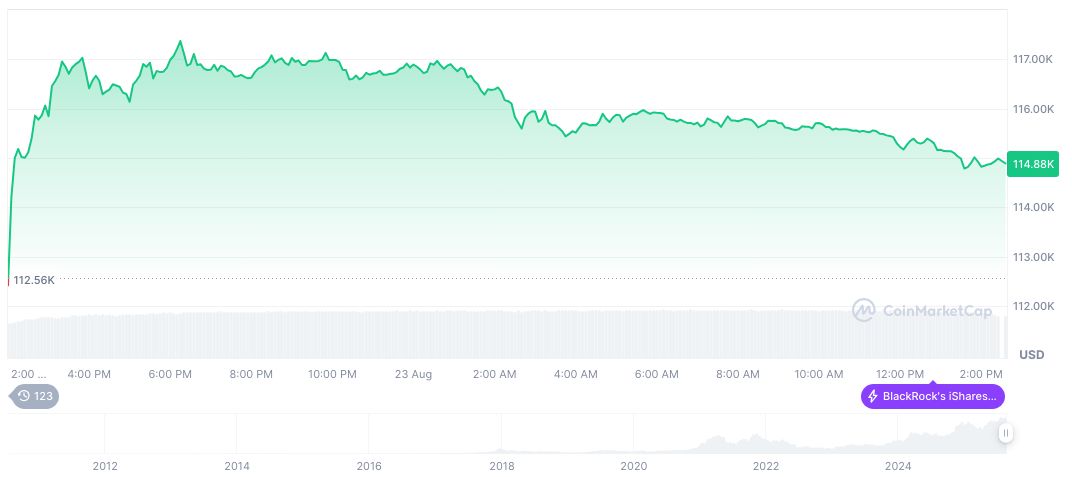- Federal Reserve’s stance on rate cuts influences market dynamics and wealth distribution.
- Market expects less aggressive cuts than proposed by political figures.
- Asset ownership disparities highlight evolving financial landscape.
The Kobeissi Letter revealed an impending divergence in Federal Reserve policy as it resists aggressive rate cuts advocated by President Trump amidst historic wealth inequality in the U.S.

This market shift may influence asset prices, stimulating environments for crypto assets like Bitcoin and Ethereum amid emerging macroeconomic conditions and asset ownership dynamics.
Fed’s Global Lag: Comparisons and Market Expectations
Analysts have observed a noticeable shift in the Federal Reserve’s policy, marking an end to a four-year stance, and signaling changes in interest rates. Adam Kobeissi from The Kobeissi Letter remarked, “The Fed just made a major shift in policy: For the last 4+ years, the Fed has been…“. President Trump calls for aggressive response, although the market remains uncertain if the Fed will execute rate cuts as severe as the proposed 300 basis points. Chairman Powell, with eight months left in his term, plays a critical role as the Fed lags behind global counterparts in rate adjustments. In May, central banks worldwide cut rates 15 times, establishing a rapid rate-cutting pace. Adam Kobeissi has taken note of President Trump’s demands for lower rates and the significant policy shifts under current leadership.
The market’s focus is on the Federal Reserve’s strategies. A less aggressive approach than desired by political voices creates uncertainties about asset distribution and monetary policies. The Fed’s delayed action compared to other central banks influences both traditional and digital asset markets. Recent reports also highlight substantial wealth disparity, noting that the wealthiest 0.1% of Americans now control wealth over 5.5 times that of the poorest 50%. Asset holders remain concerned about these continuing inequalities.
Community reactions to potential shifts in Fed policy accentuate broader financial implications, with skepticism regarding whether anticipated rate cuts can provide relief against inflation similar to past decades. The wealth gap has expanded significantly, growing to $40 trillion since 1990. Analysts emphasize that asset ownership could become critical as market participants navigate these policy rivalries.
Implications of Wealth Distribution Shifts and Bitcoin Volatility
Did you know? In the 1970s, the Federal Reserve’s interest rate reductions during high inflation periods resulted in a historically wider wealth gap, a pattern analysts are carefully watching with today’s economic shifts.
As of August 24, 2025, Bitcoin’s price shifted to $114,947.43, with a market cap of $2.29 trillion. The 24-hour trading volume dipped by 37.16%, and Bitcoin controls 57.45% of the market. CoinMarketCap data reflects recent price adjustments: -0.60% over 24-hours and -2.59% in seven days. Overall, BTC’s 60-day price performance shows moderate gains at 7.81%.
Insights from Coincu research suggest that potential outcomes may include shifts in financial and regulatory landscapes, particularly within asset ownership frameworks. Emerging trends highlight increased importance of central bank policies on the digital front, where delayed rate cuts could influence aspects like DeFi platform yields. Strategies reflect ongoing evaluation of monetary decisions in efforts to anticipate adjustments in capital flows and broader asset markets.
| DISCLAIMER: The information on this website is provided as general market commentary and does not constitute investment advice. We encourage you to do your own research before investing. |
Source: https://coincu.com/markets/fed-rate-cut-market-impact-debate/
